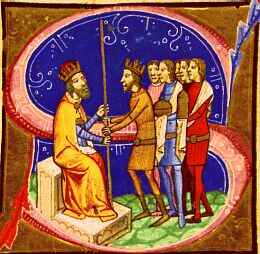
The world is so mysterious that the craving for exploring sites and revealing archaeological remains always encourages researchers to dig deeper. This time a team of archaeologists have most likely found two-time reigning king of Hungary in the crypt of the Cathedral of Pécs.
Zsolt Tóth, the leading archaeologist of this site said that his team has discovered the remains of a Roman cemetery building and the walls of the first cathedral, which was created by the Hungarian king Péter Orseolo, during whose regime Hungary became a vassal of the Holy Roman Empire that widened the way for future interests of the Empire.
The team claimed that Orseolo, the two-time Hungarian king's original tomb has been excavated but as per Tóth, the bones were not found and it means they had been placed somewhere else in in the crypt, reported a local news outlet MTI.
Boldizsár Csornay, the Director of Pécs's Janus Pannonius Museum stated that the findings of the historic cathedral and the cemetery have their own scientific importance because now it is revealed that Christian religion and culture left the imprints on this particular area since the 4th century.

It should be noted that King Saint Stephen has a son Imre, who died in 1031 and then the king chose his nephew, Orseolo as his heir and he became the king in 1038. As per the historians, in 1041 he left the country due to internal conflicts but through the help of Holy Roman Emperor Henry III, he again made it to the throne and ruled from 1044 to 1046.
Later the king was captured by Árpád dynasty's András I. After the capture Orseolo was blinded which made him unfit king to rule over Hungary and then András I stepped in as a king and ruled from 1046 to 1060.
The cause of Orseolo's death is still a mystery as some experts claim that he died after the blinding incident in 1046, while some believe that he married and died more than a decade later and the body was buried in Pécs's St. Peter and St. Paul's Cathedral, which was built as per his order.








